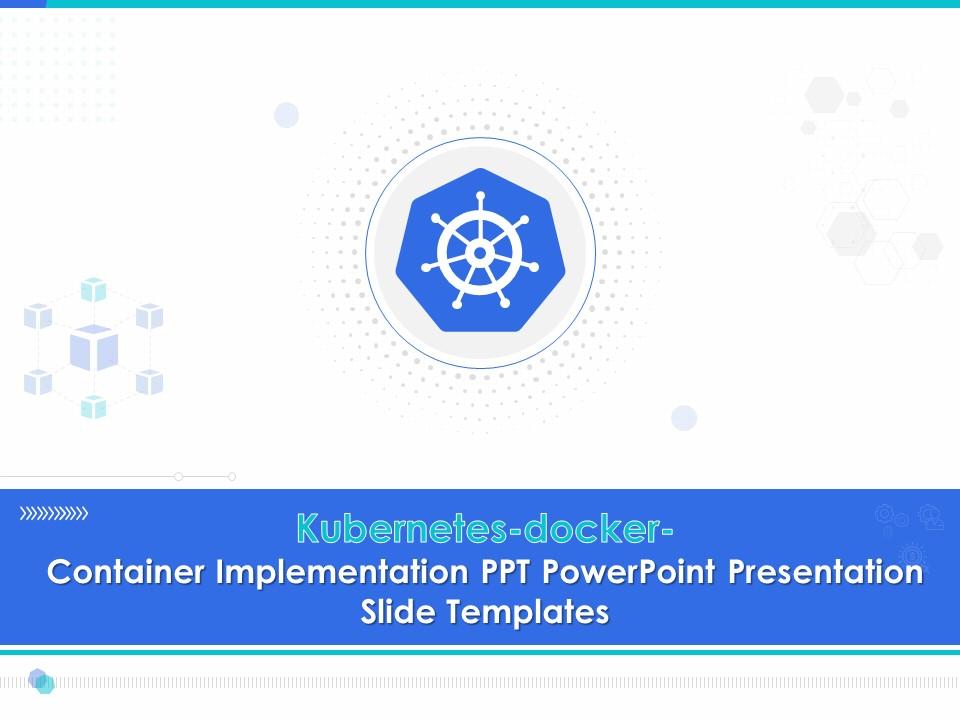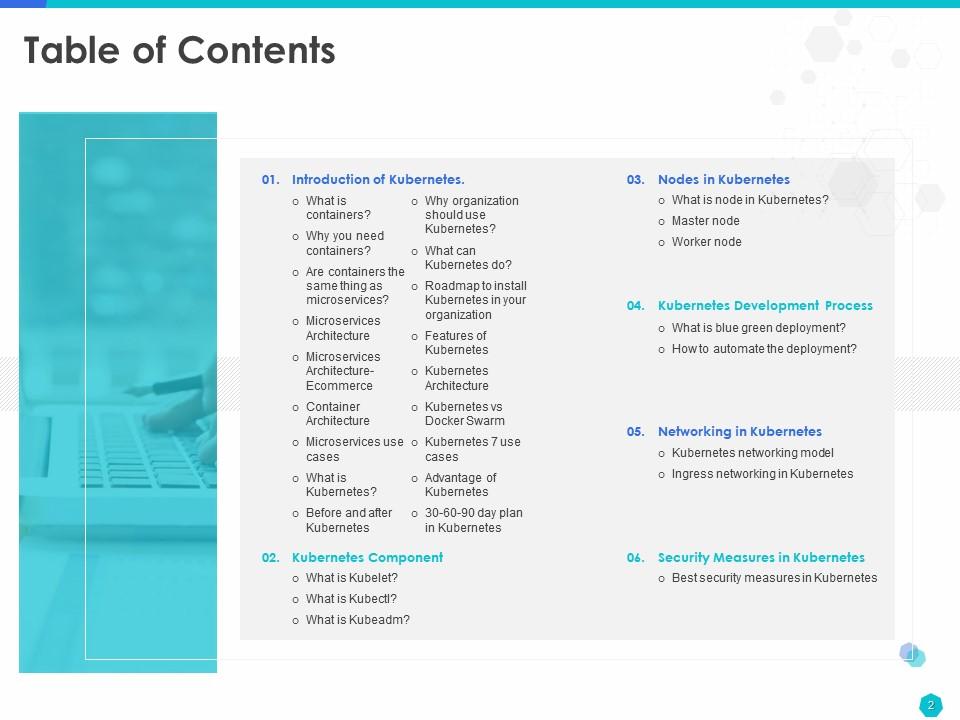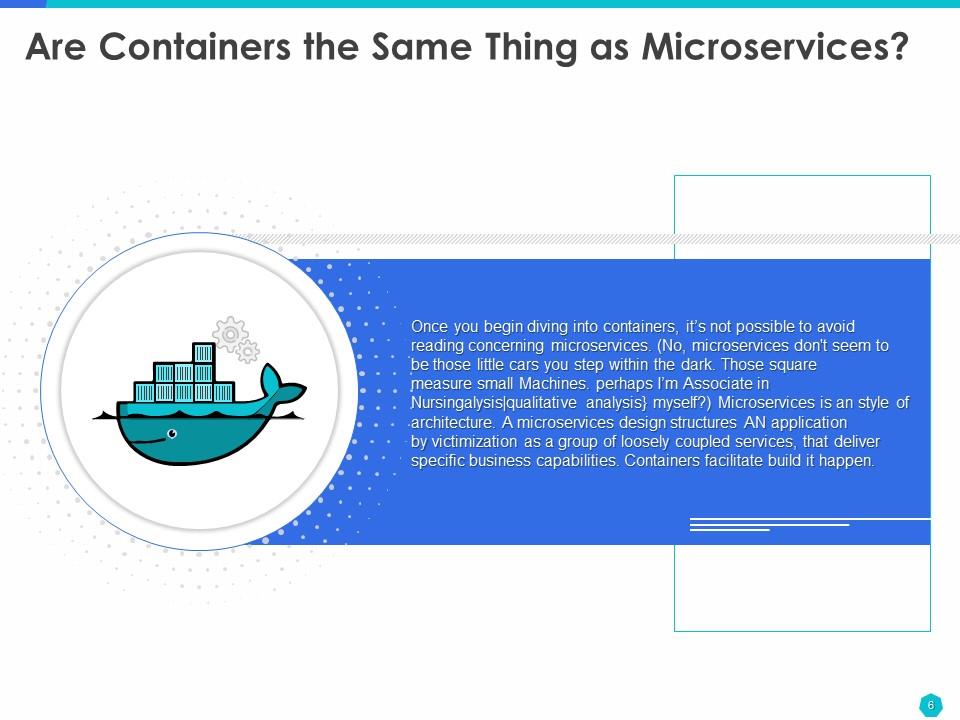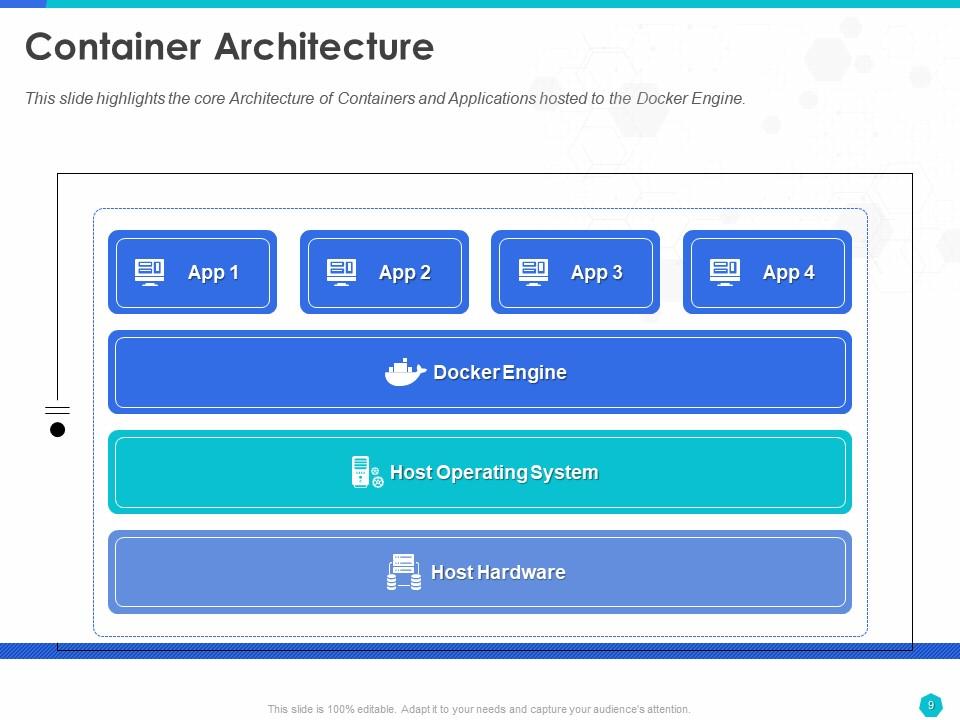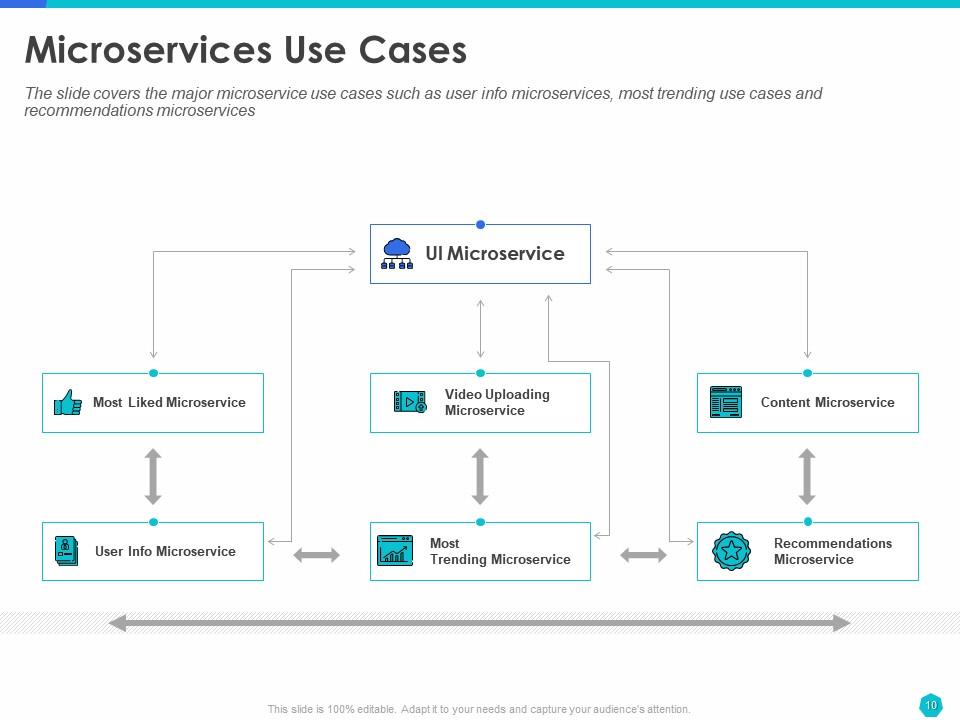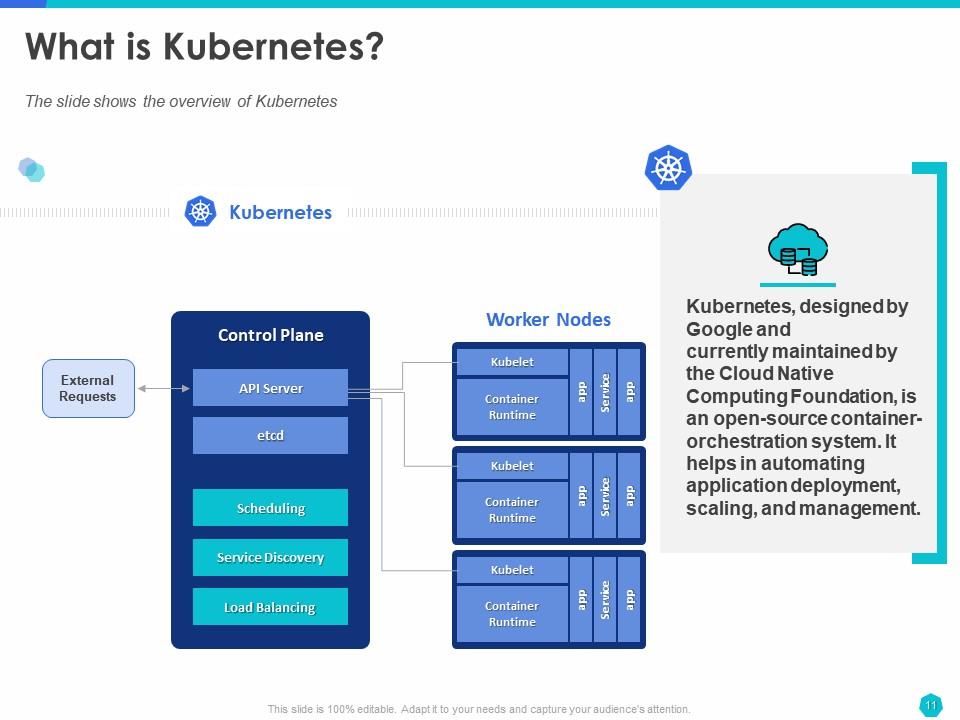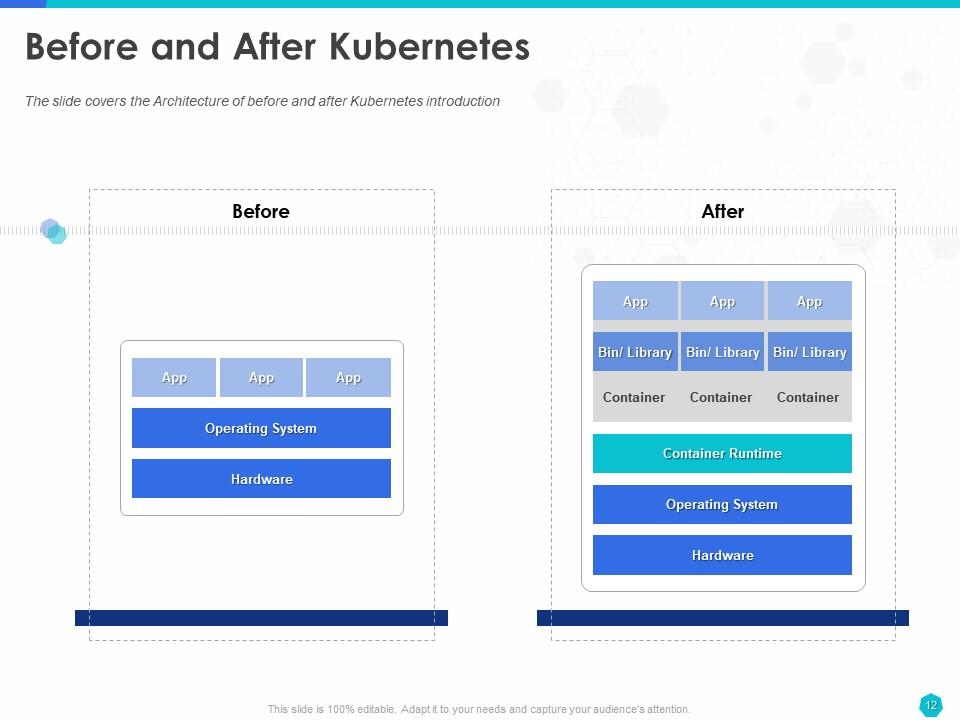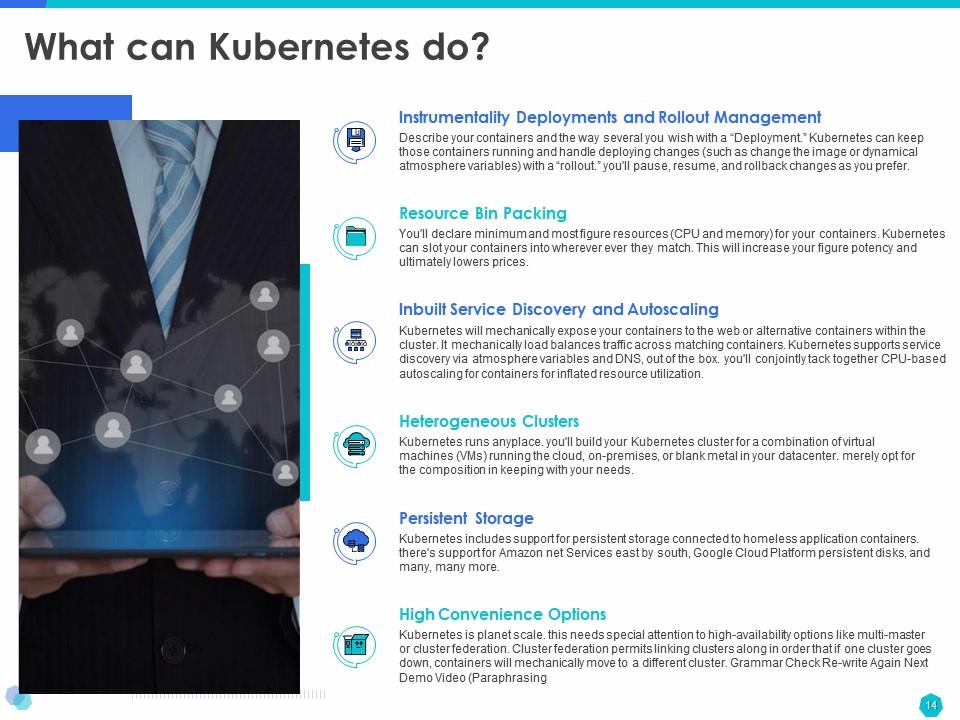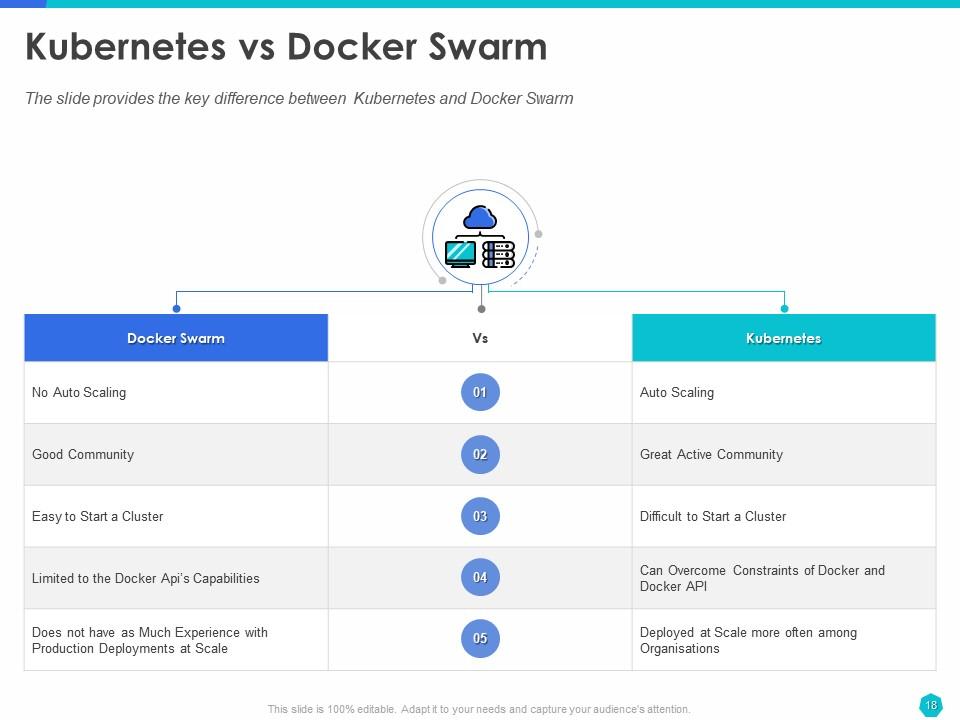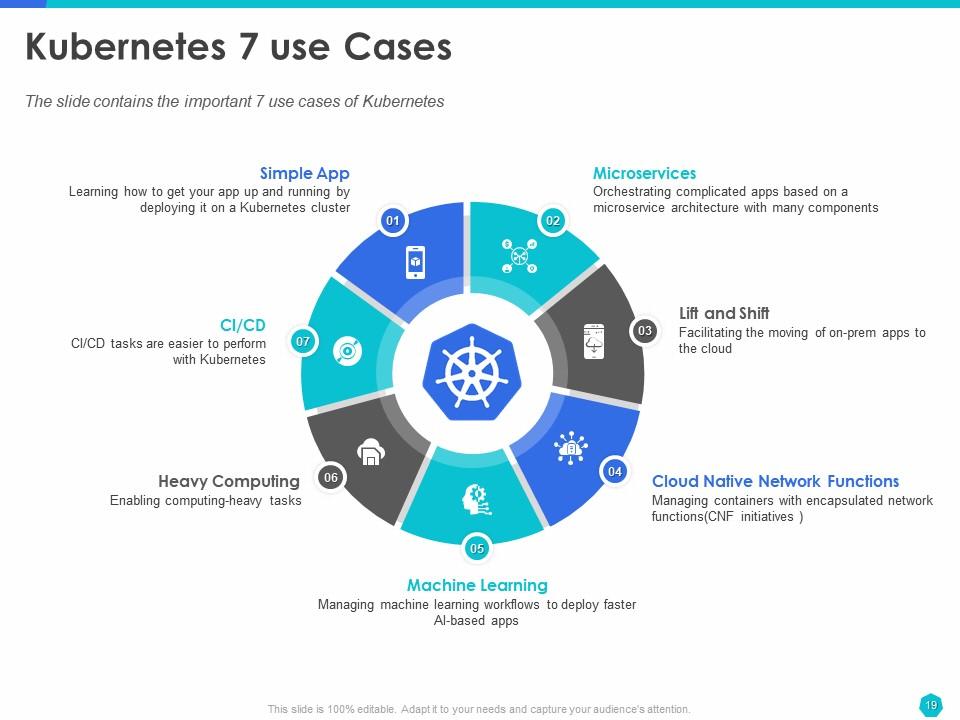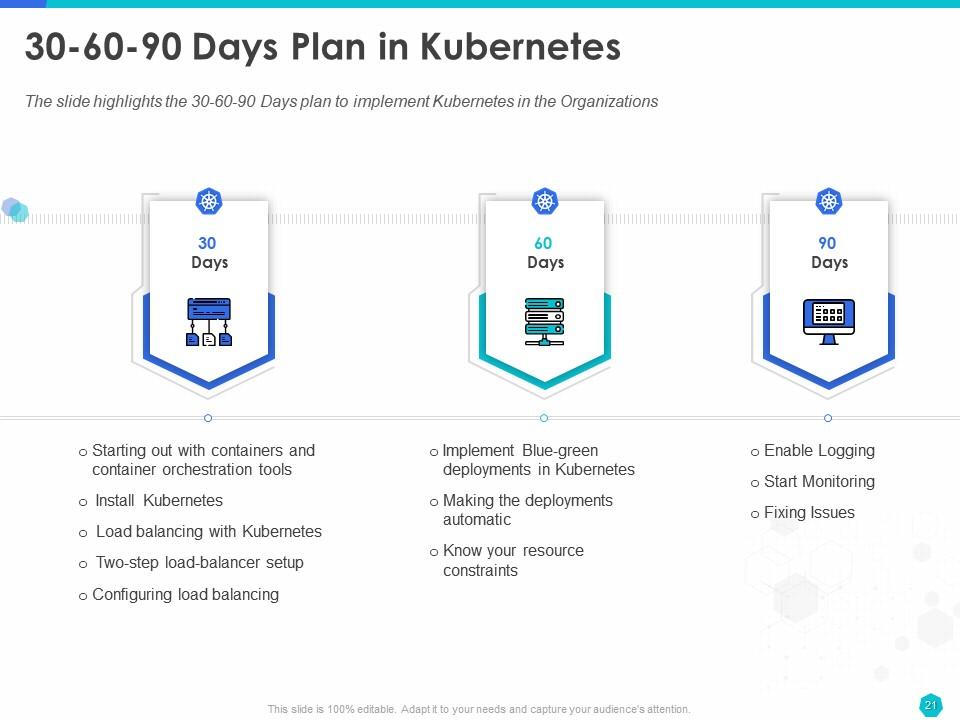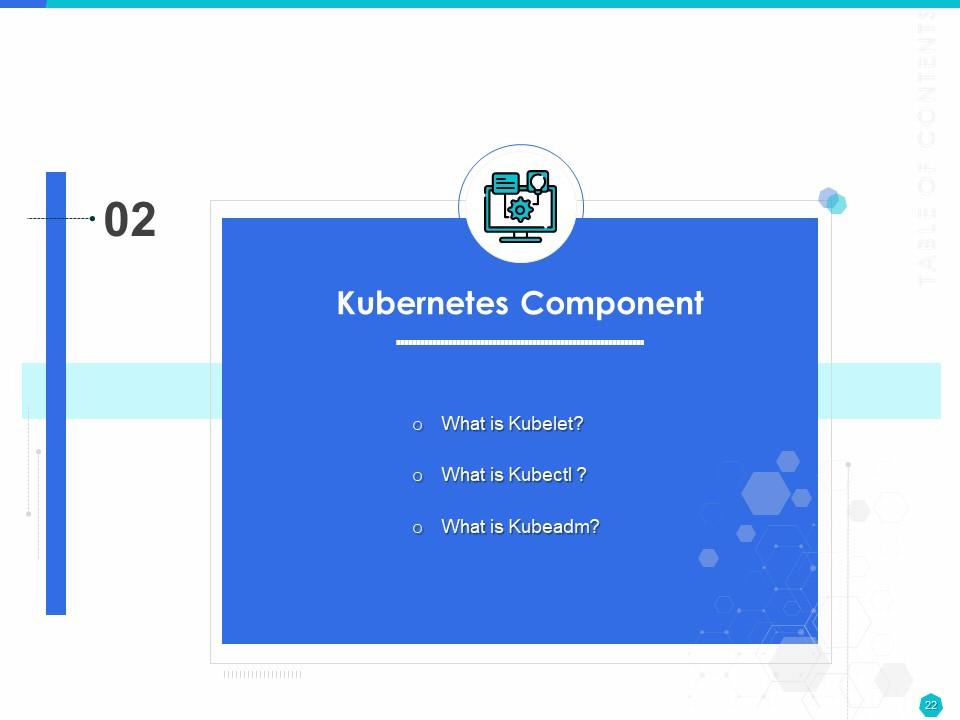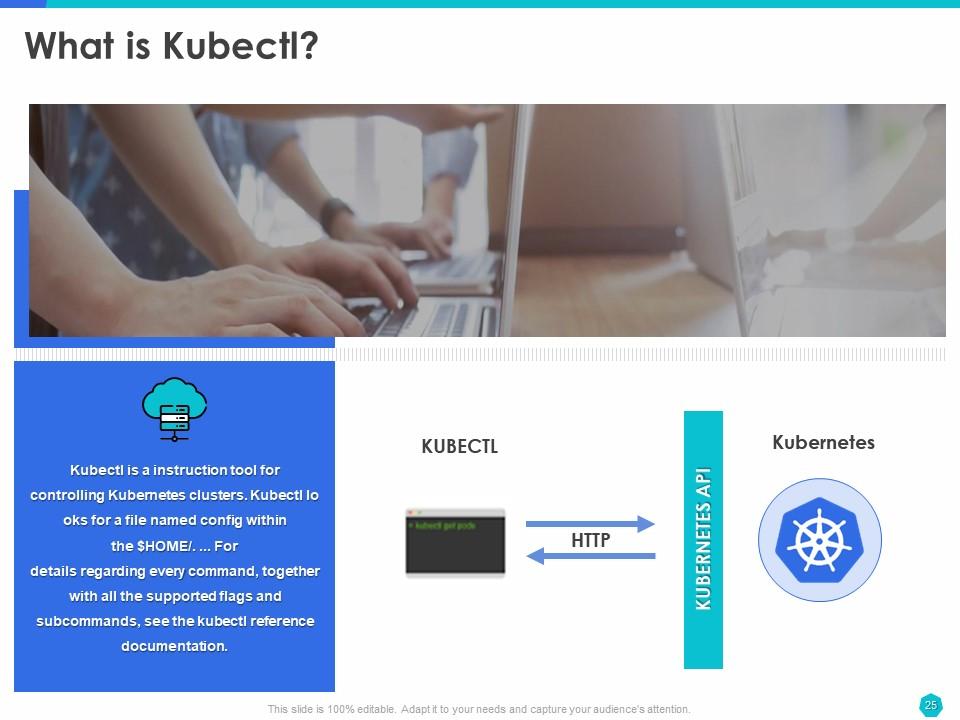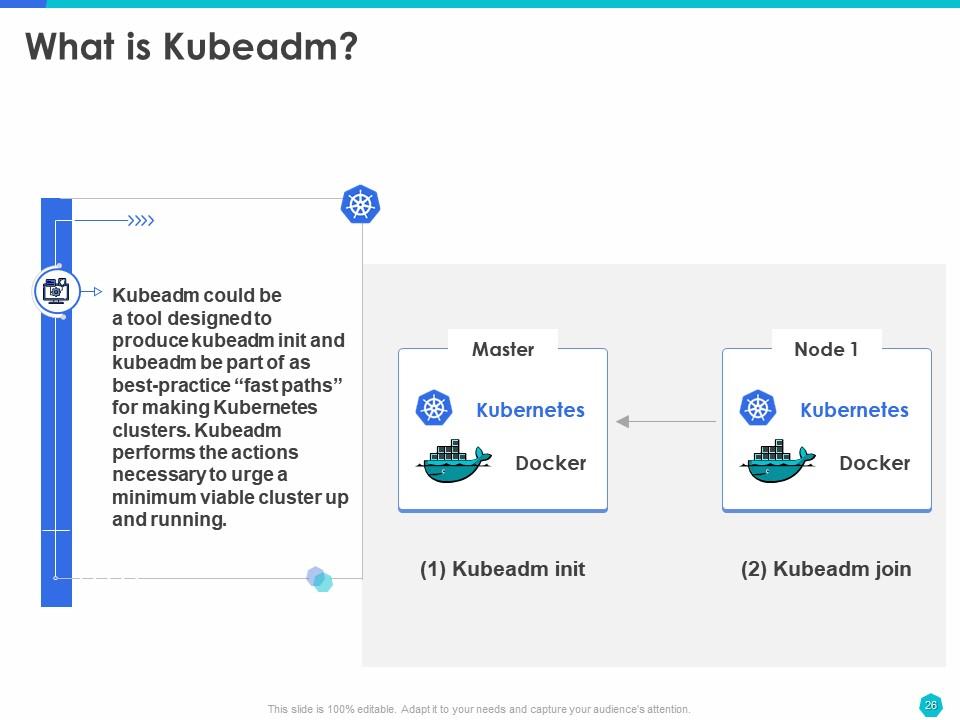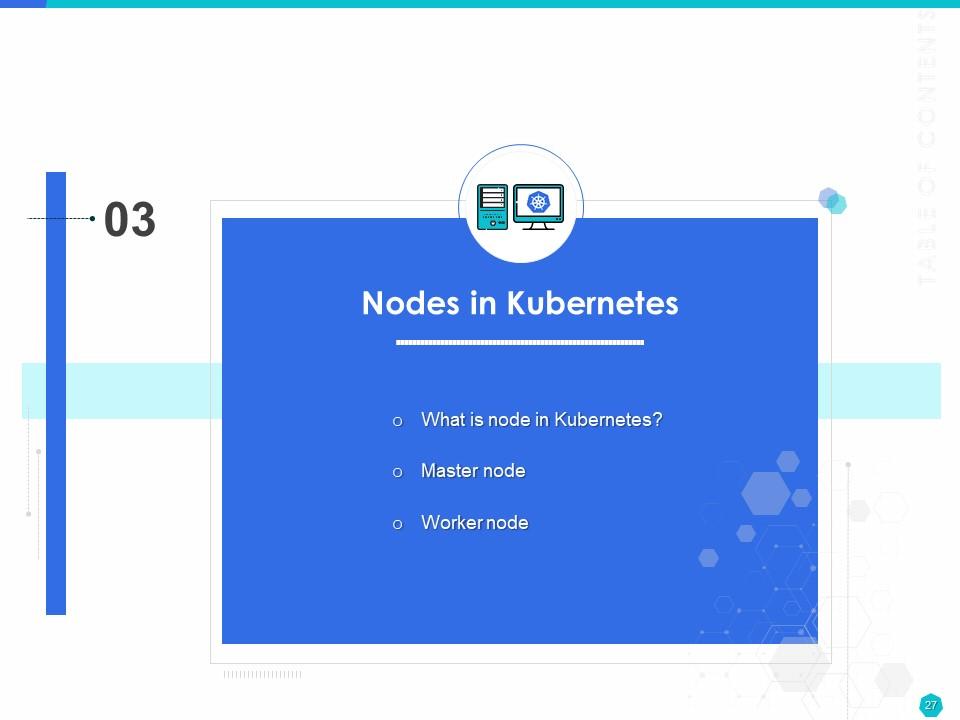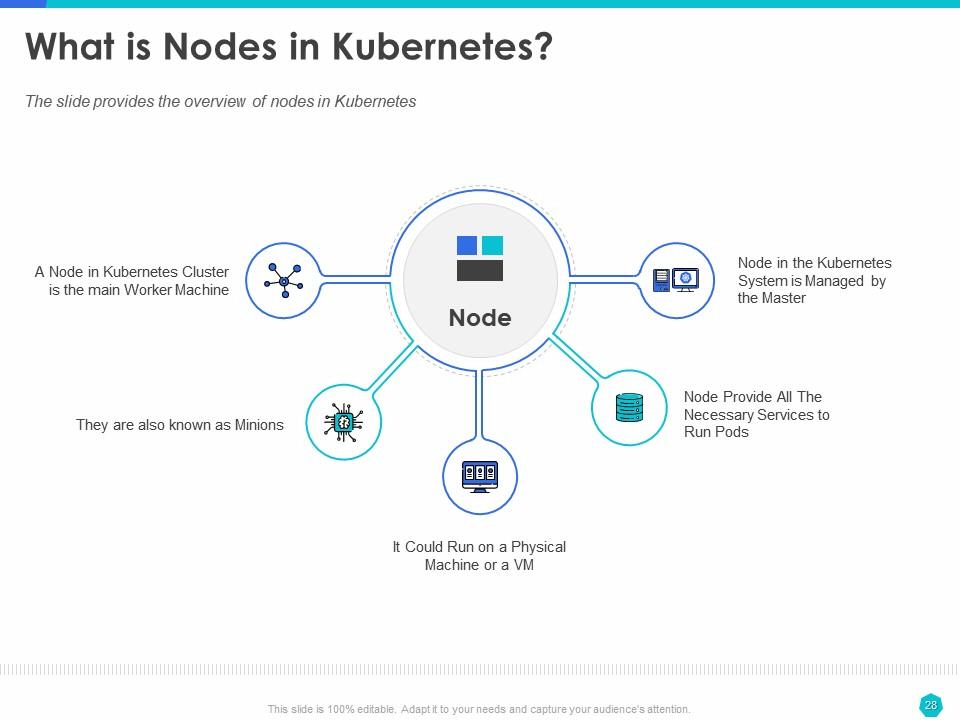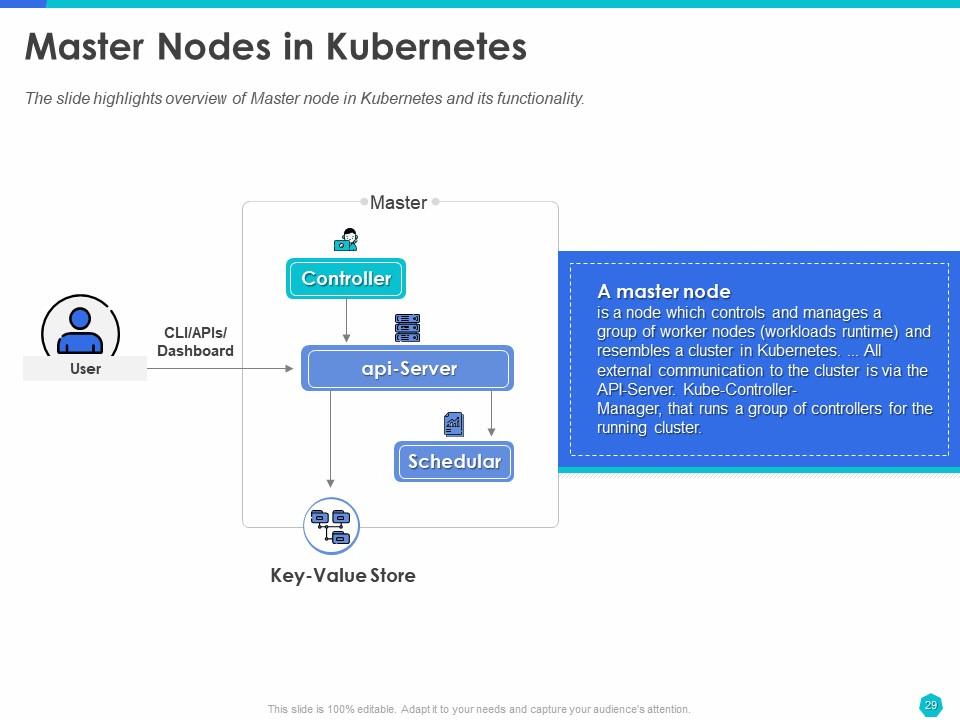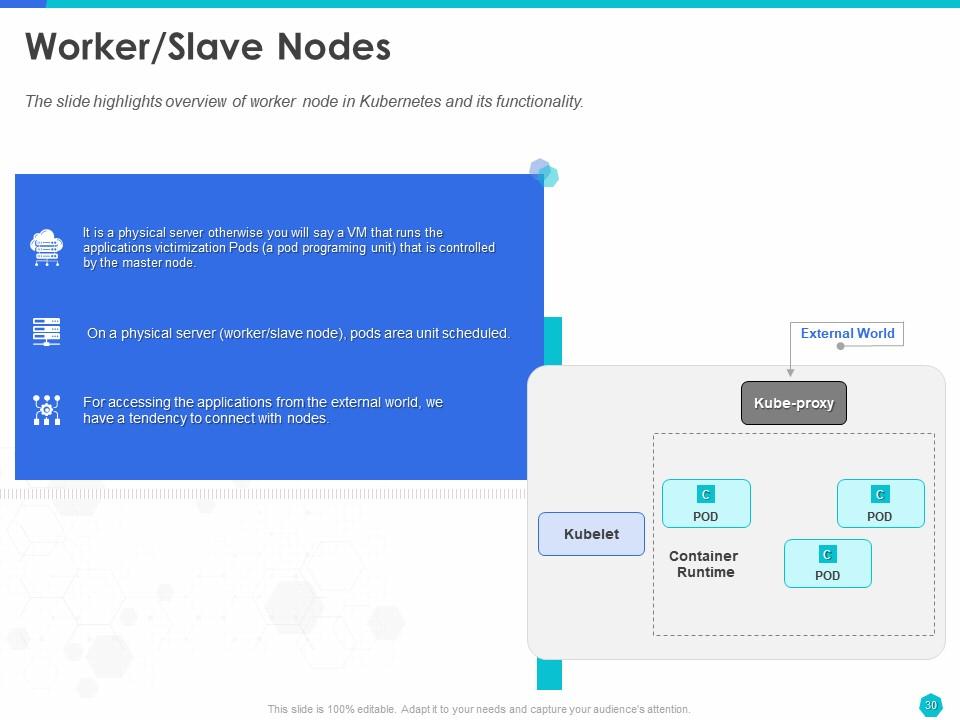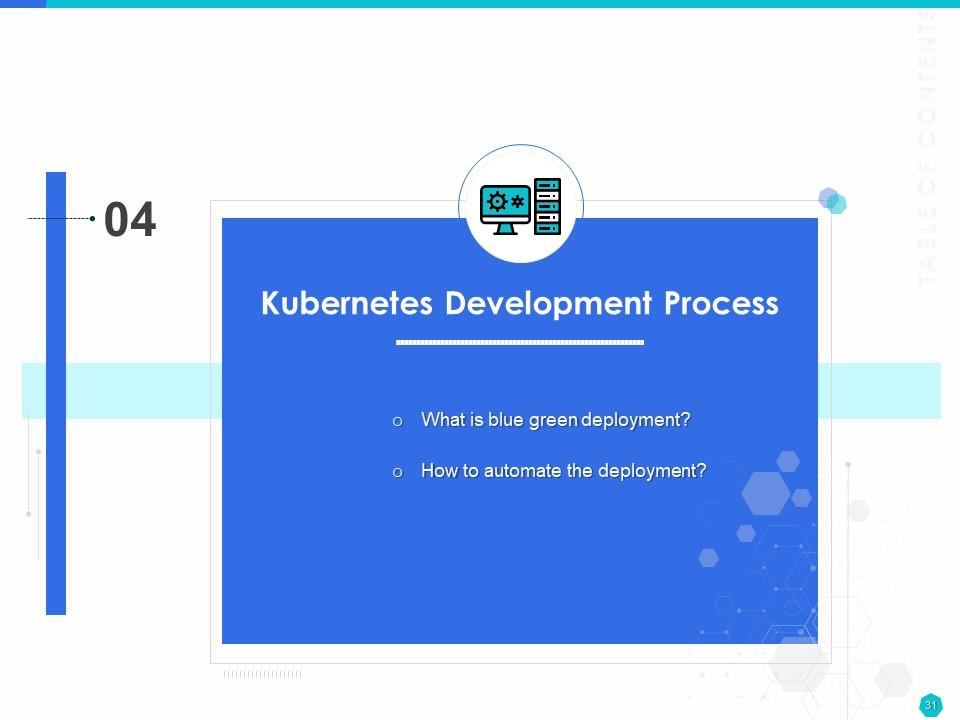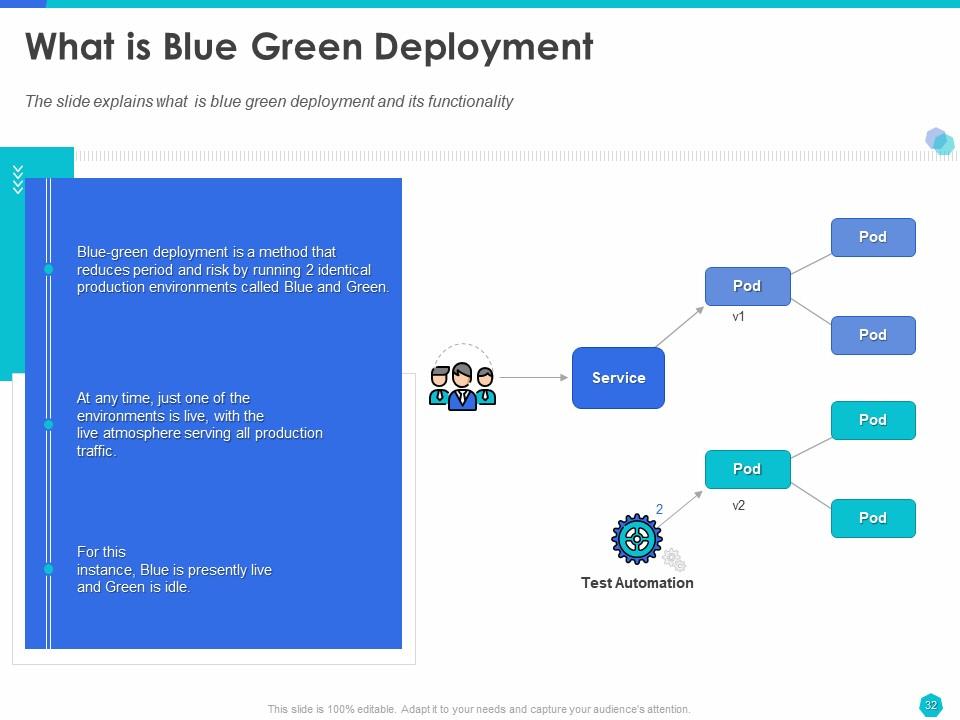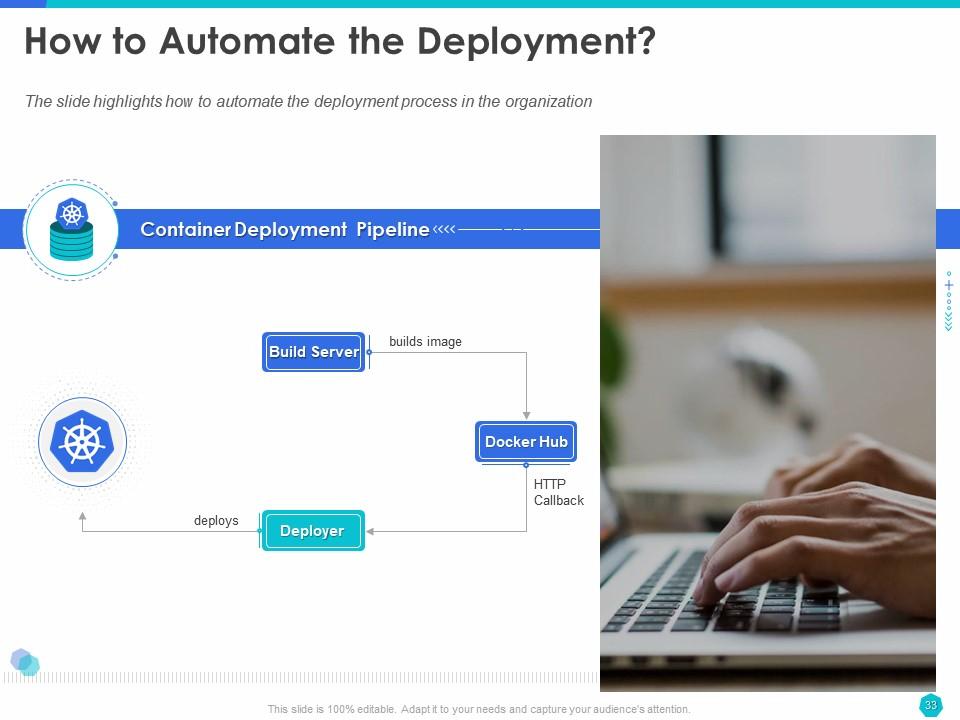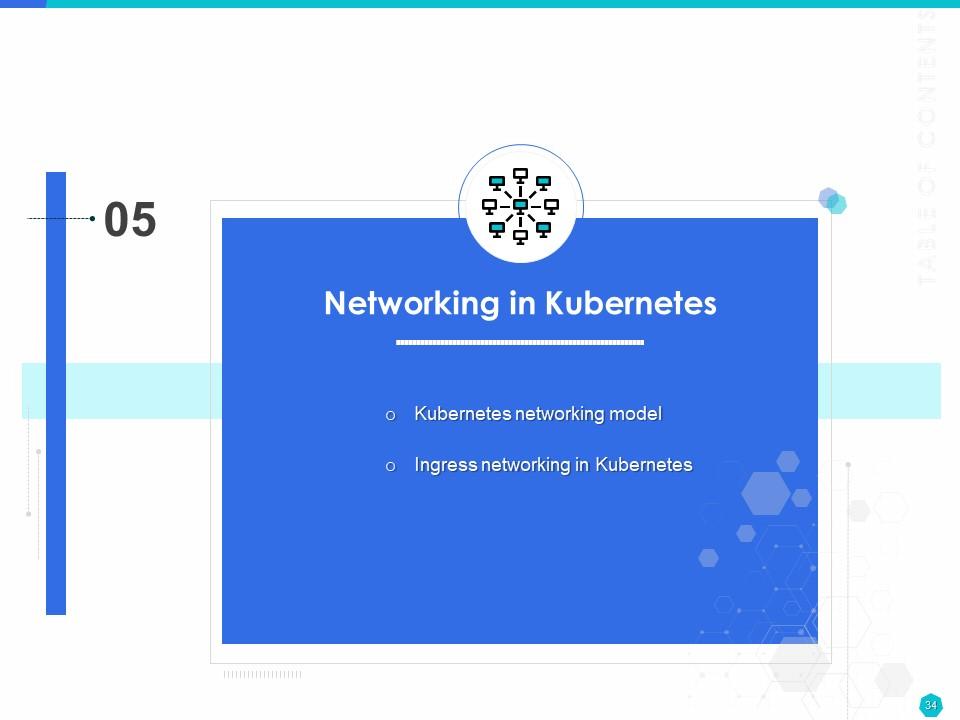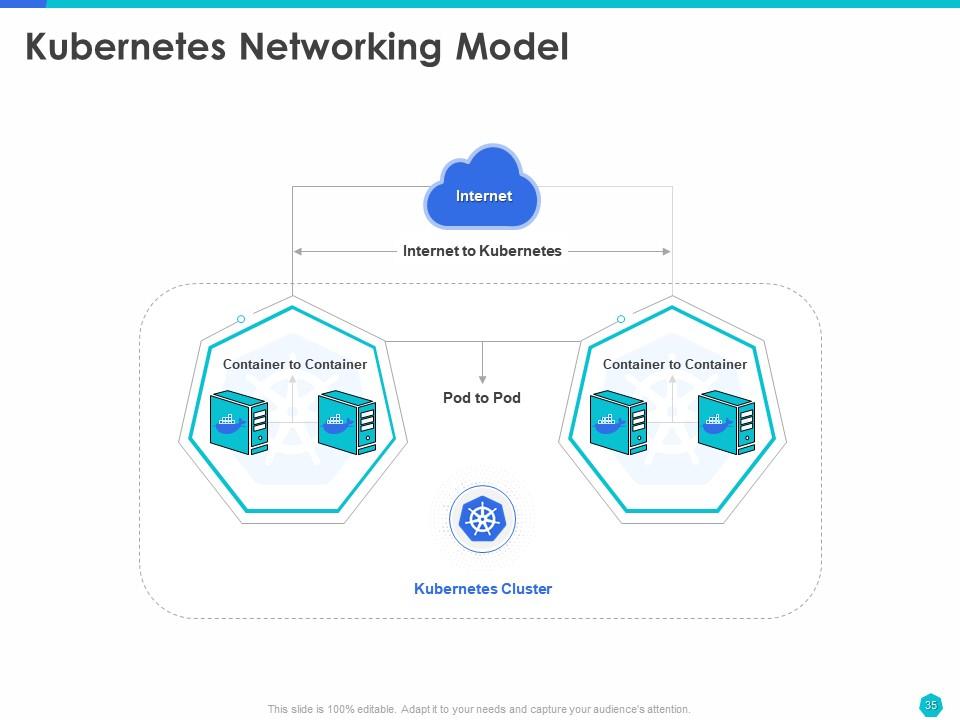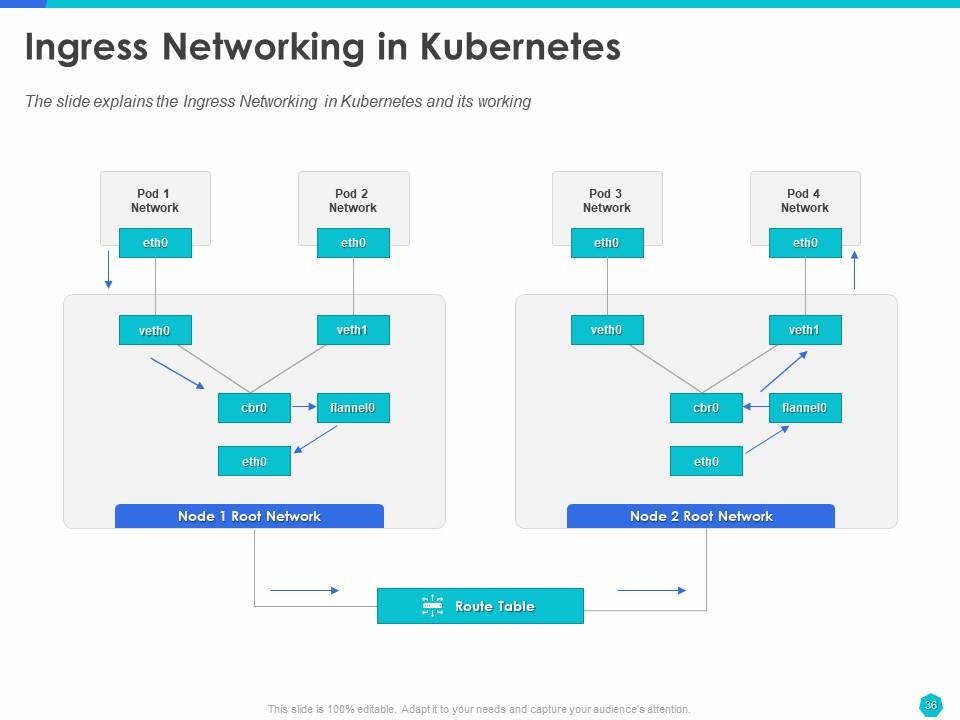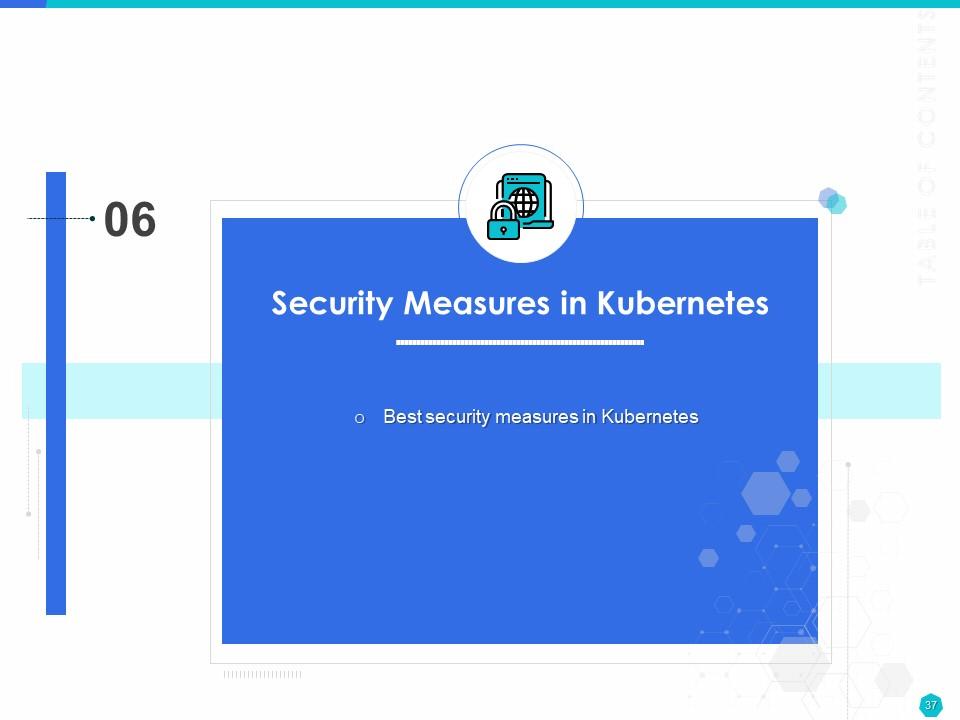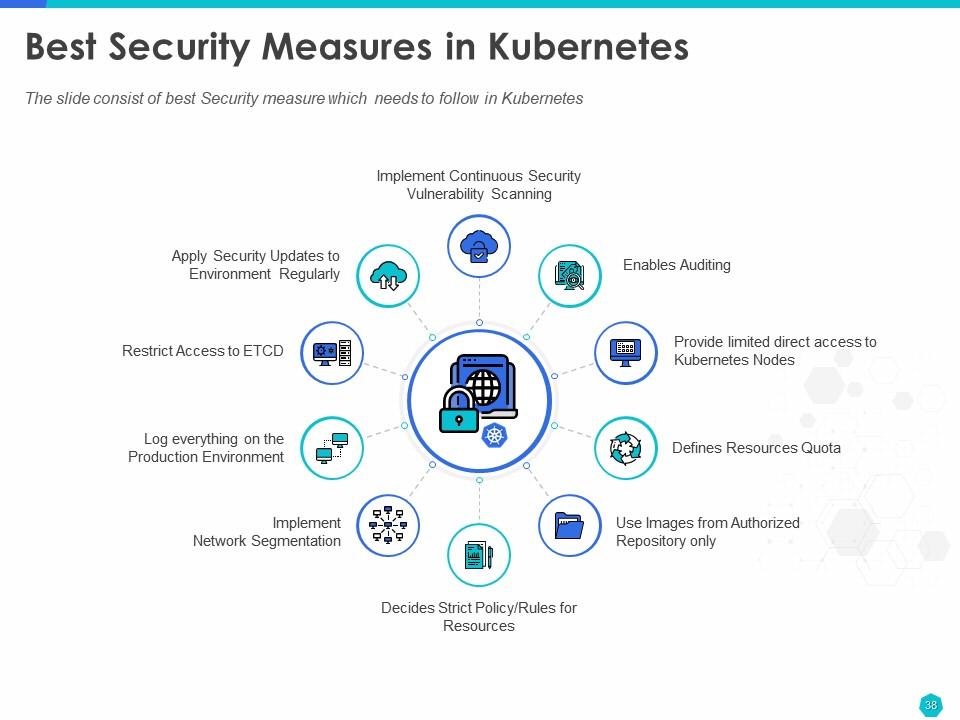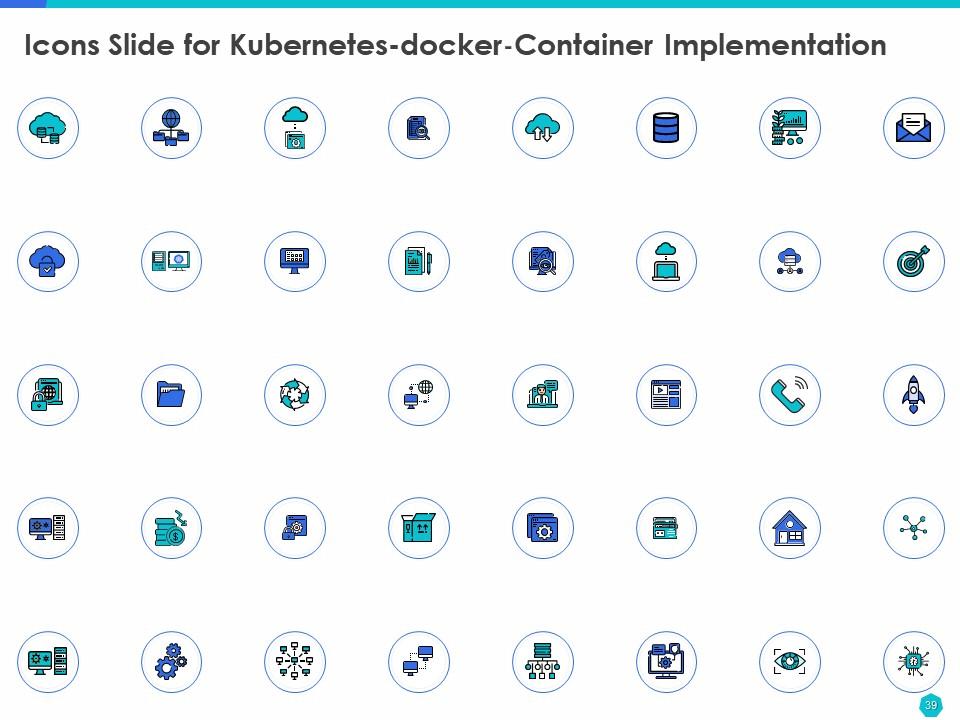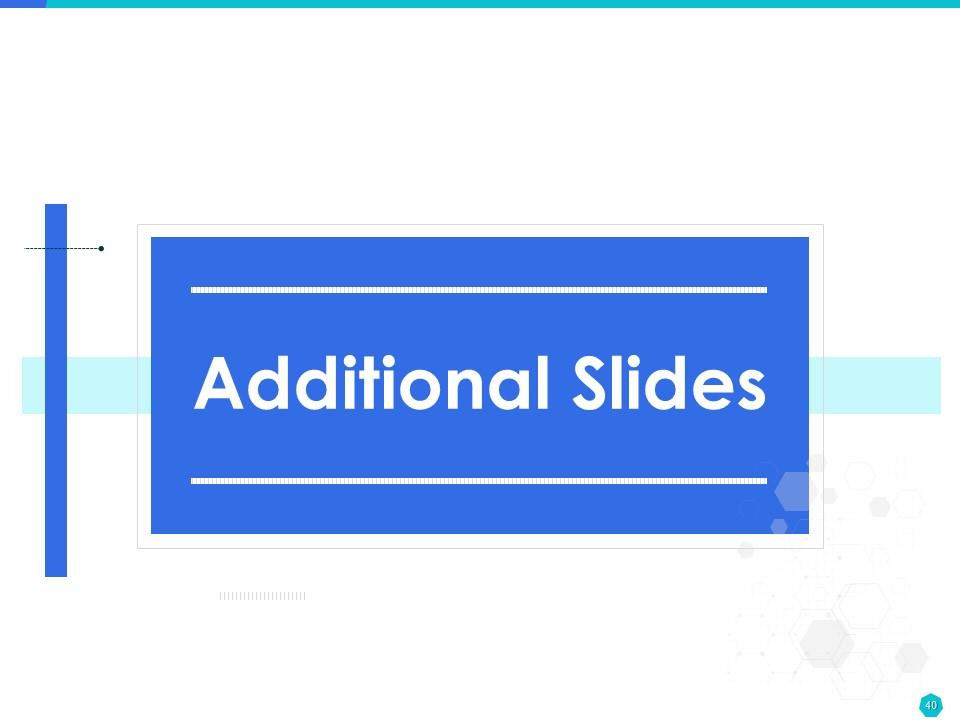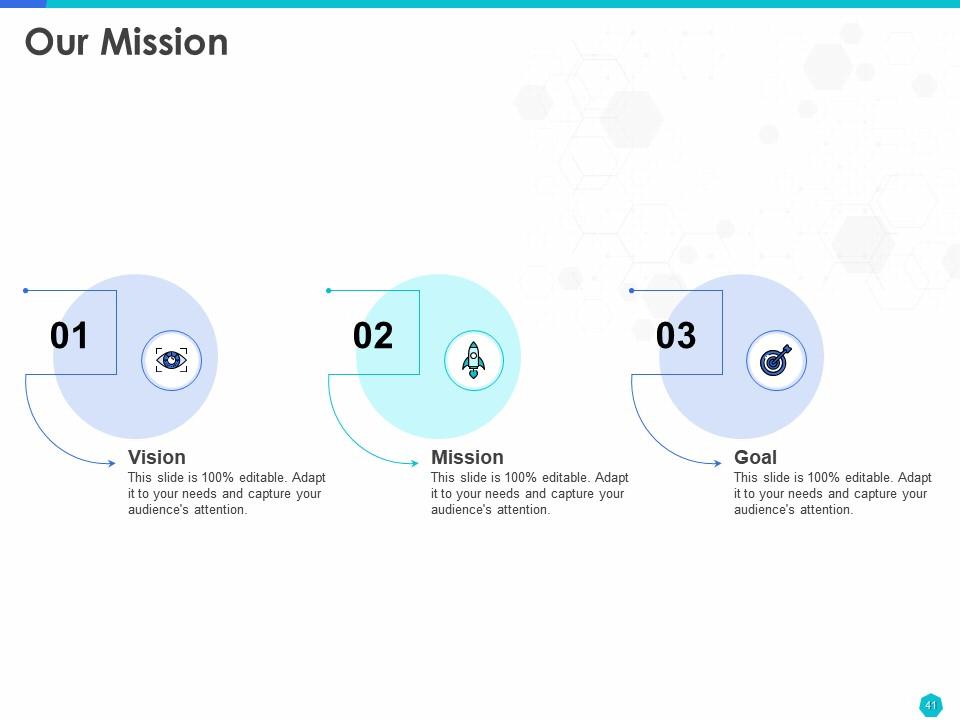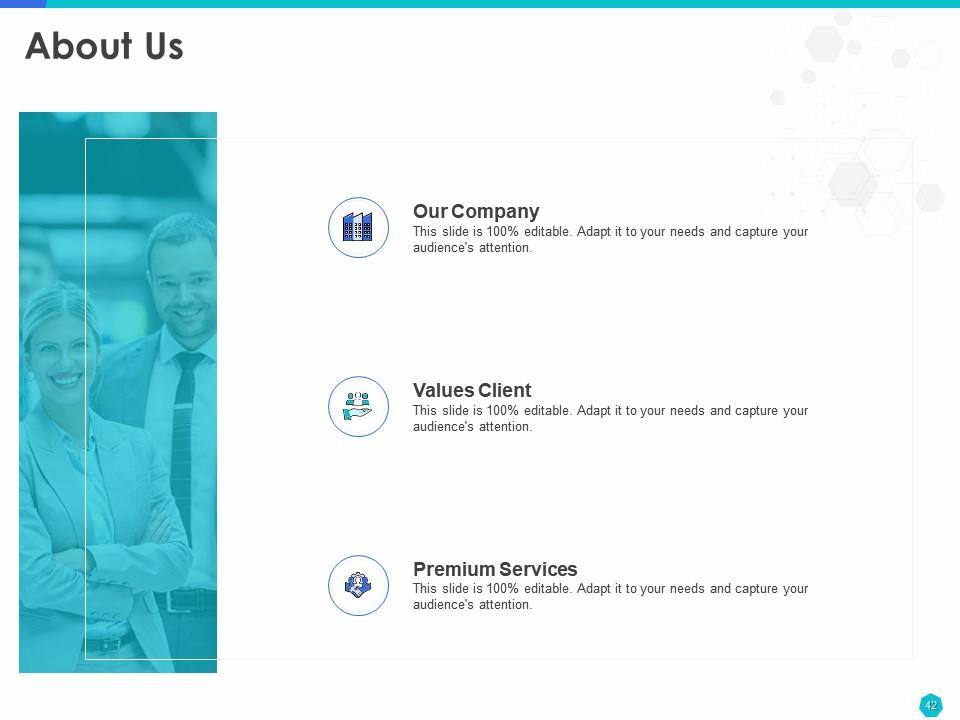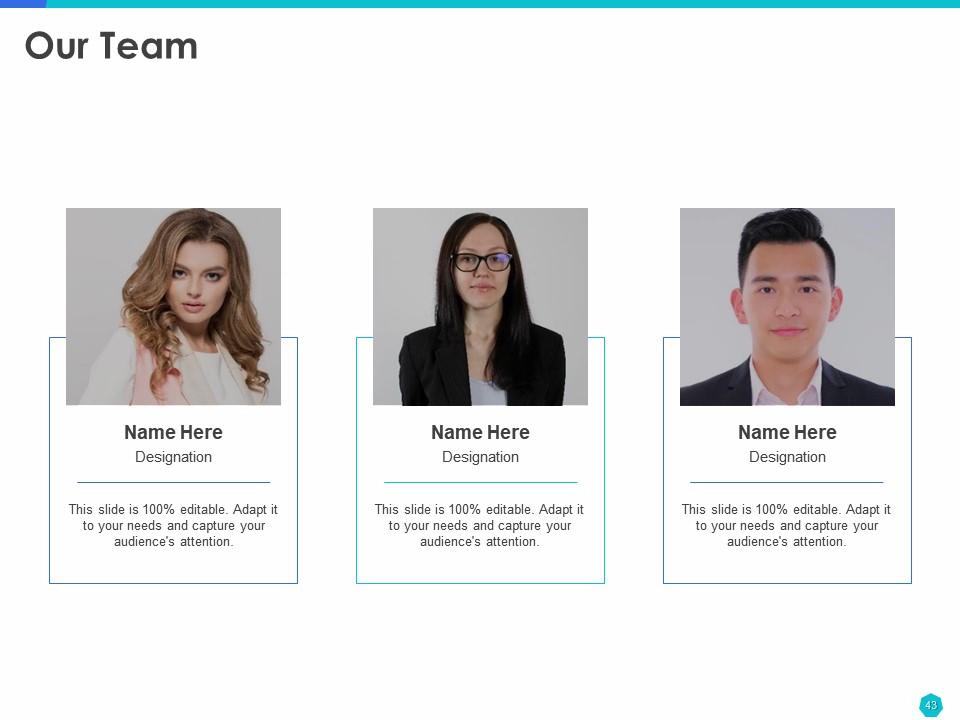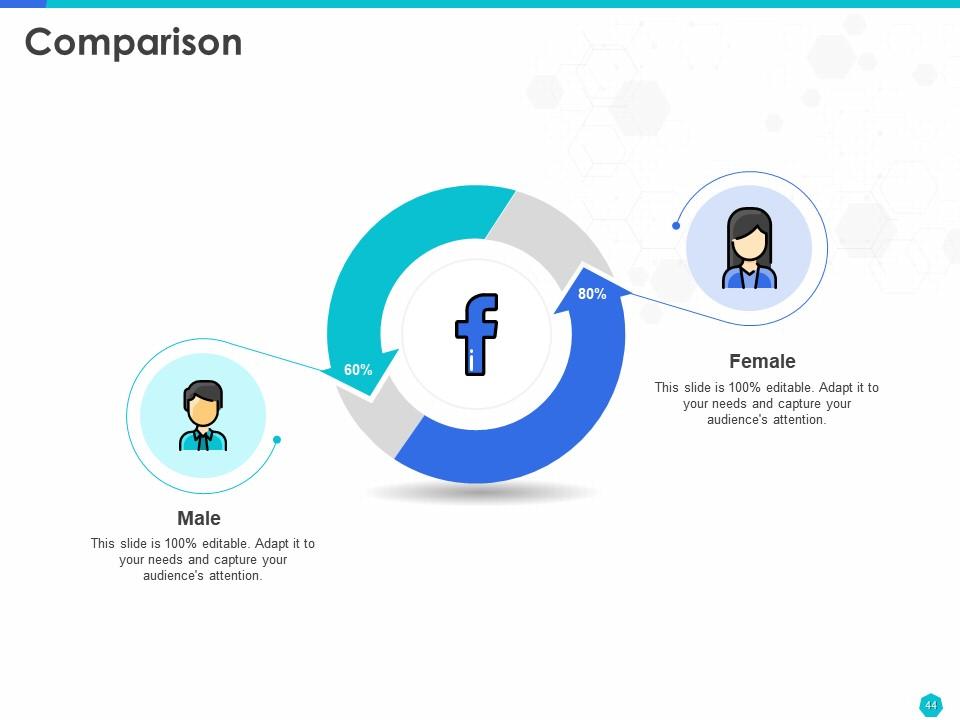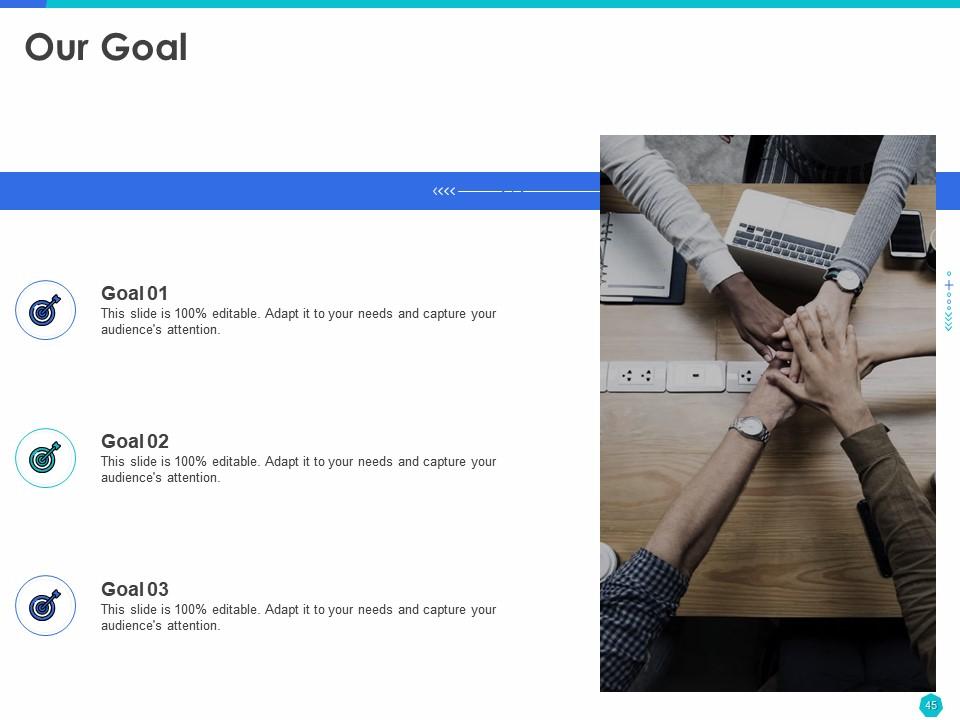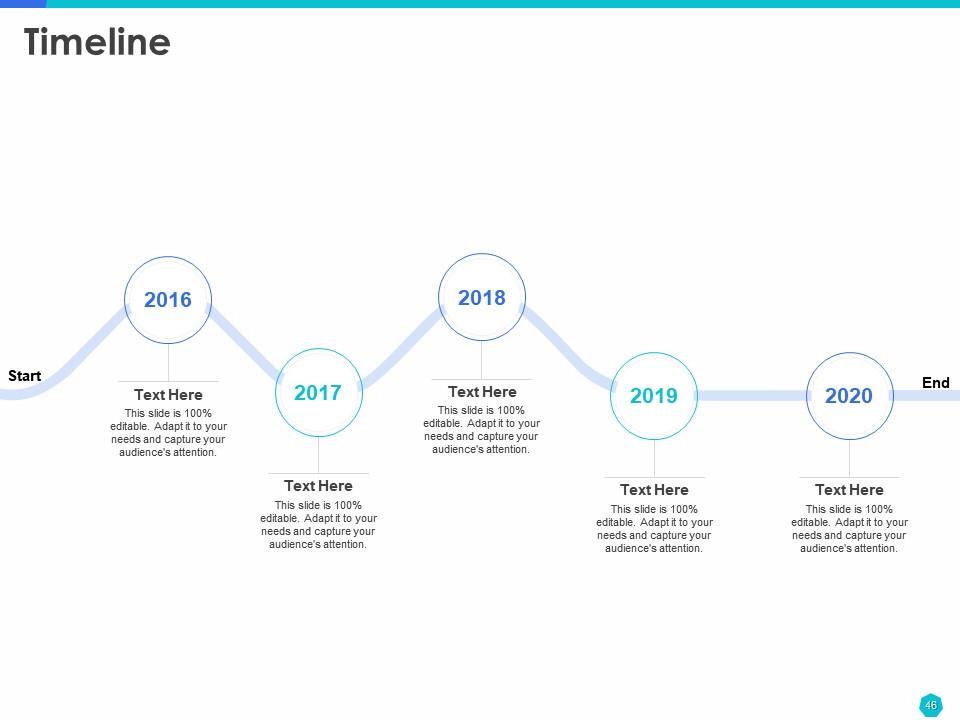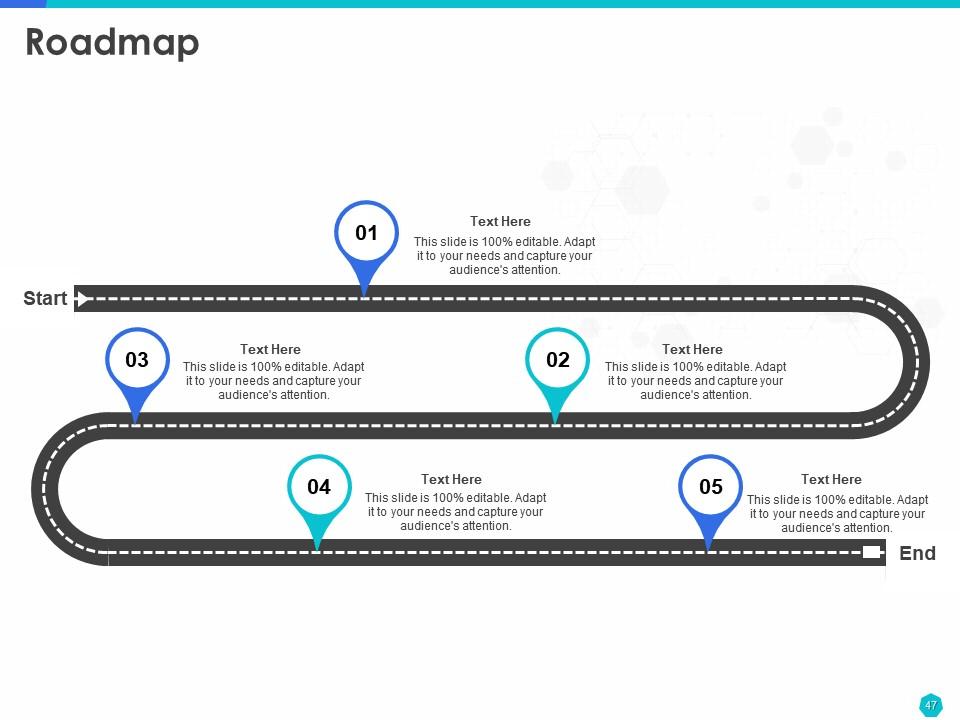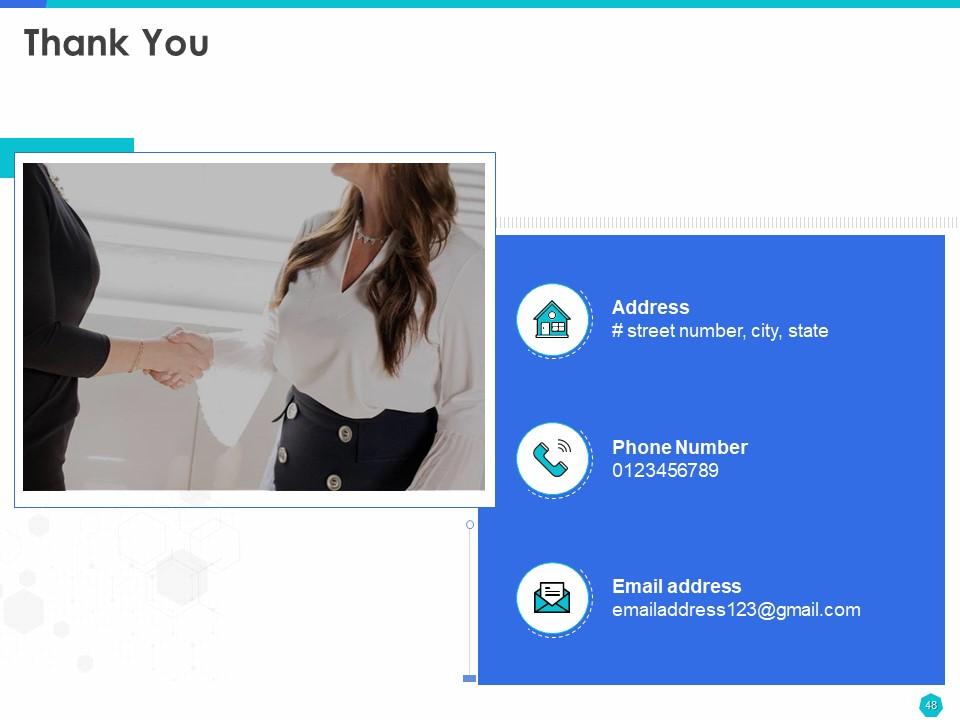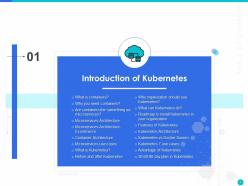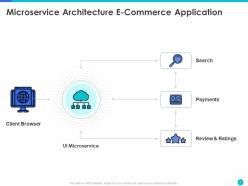Kubernetes docker container implementation ppt powerpoint presentation slide templates
Our Kubernetes Docker Container Implementation PowerPoint presentation is curated to provide in-depth knowledge and understanding of Kubernetes. With visually appealing slides and engaging graphics, it covers various aspects. This Kubernetes presentation explains the concept of containers, their significance, and why they are used. One of the key highlights of this presentation is the inclusion of microservices architecture, which is illustrated through informative diagrams. Furthermore, it encompasses a wide range of use cases, showcasing practical applications of Kubernetes, Kubernetes architecture, and more. The template also delves into the fundamentals of Kubernetes, providing a clear explanation of what it is and its capabilities. The content within these slides is meticulously curated, backed by thorough research to ensure accuracy and relevance. This complete Kubernetes presentation is an invaluable resource for corporate employees seeking to create and articulate Kubernetes roadmaps, present use cases, and emphasize the advantages of adopting this technology. It provides detailed insights into various Kubernetes components, offering a comprehensive understanding of their functionalities. Moreover, these PowerPoint slides are highly editable, allowing users to tailor the content to their needs and preferences. Don't miss out on the opportunity to download this stunning Kubernetes ppt. Go and download our docker ppt today!
You must be logged in to download this presentation.
PowerPoint presentation slides
Introducing Kubernetes Docker Container Implementation Ppt Powerpoint Presentation Slide Templates. This complete deck is composed of 48 visually-appealing PPT slides. Each PowerPoint template features 100% editable design elements. Personalize text, background, colors, font, orientation, shapes, and patterns within moments. Change the file format to PDF, PNG, or JPG according to your needs. View this presentation using standard or widescreen formats. It is compatible with Google Slides.
People who downloaded this PowerPoint presentation also viewed the following :
Content of this Powerpoint Presentation
Kubernetes is one of the fastest-growing open-source systems in the world. According to a report by ‘Markets N Research,’ the global Kubernetes market was valued at $1.8 billion in 2022. The number is expected to grow to $7.3 billion in 2030.
Kubernetes helps improve overall productivity with its automation capabilities. It is a time-tested, open-source solution backed by a large community.
Several professionals have added skills that will help them work better with Kubernetes. As an organization, rolling out training sessions on Kubernetes and its development process would be beneficial.
You can use our pre-designed and content-rich Kubernetes Docker Container Implementation PPT for your sessions. It covers topics such as an introduction to Kubernetes, components, nodes, and security measures.
Kubernetes Docker Container Implementation PPT Template
Our Kubernetes implementation deck consists of 48 slides, complete with data and diagrams. If you want to provide an overview of your company before presenting the topic, you can use the additional slides included in the bundle, such as ‘About Us,’ ‘Team,’ and ‘Goal'.
The design elements are editable so that you can adapt them according to your company’s branding.
Let us look at some slides that are a part of our kubernetes docker container implementation template.
Template 1: What is a Container?
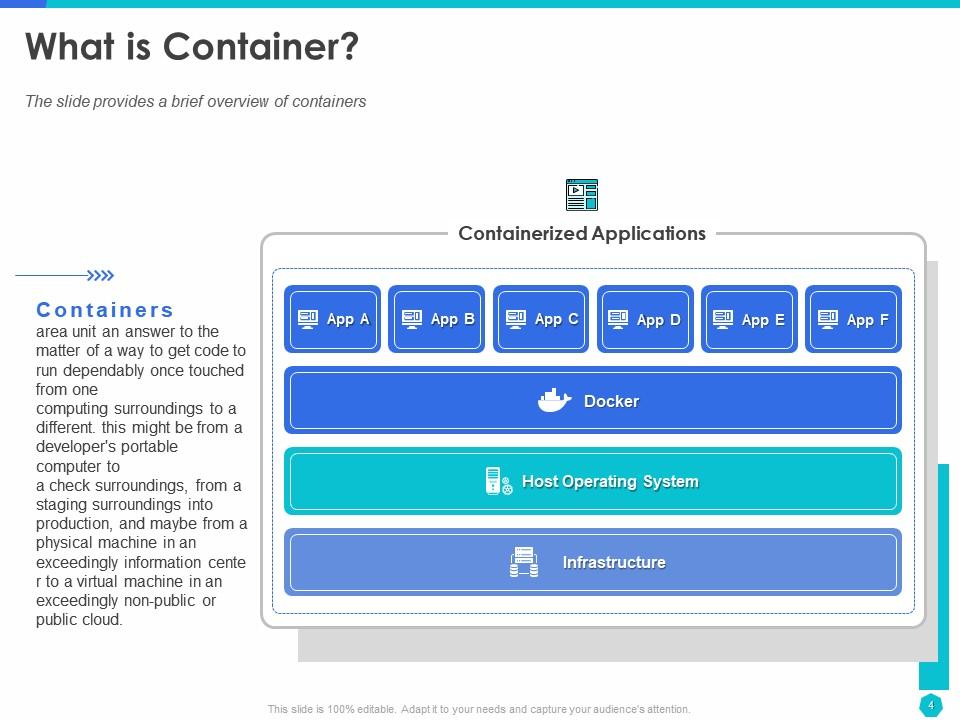
A container is one of the basic components of the kubernetes architecture. The slide provides a brief overview of the container with text content and an infographic. During the presentation the infographic can help you further explain the concept of container with examples. It also helps the audience retain information better. The slide is editable, so you can use the text content as is or add a definition and example of your own.
Template 2: Why do you need Containers?
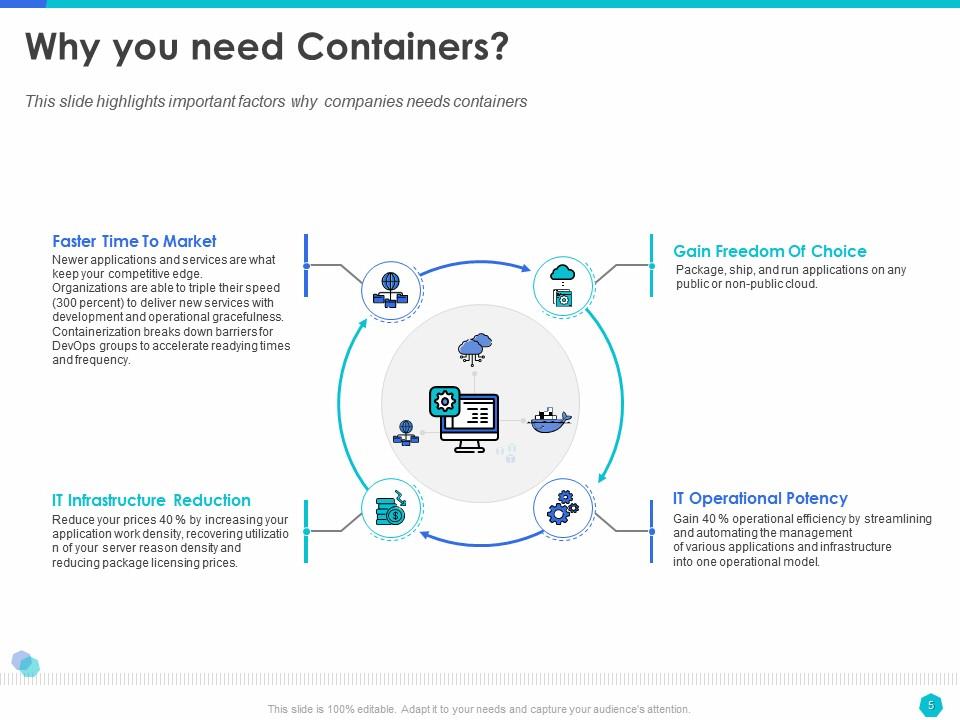
Containers help companies deliver consistent application performance on different platforms. It helps reduce IT infrastructure cost while reducing the time to market. You can elaborate on these container advantages using this template. At the center of the slide is a circular container infographic with four sections on the circumference for advantages. The container advantages are mentioned as headings with detailed explanations below them.
Template 3: Microservices Architecture
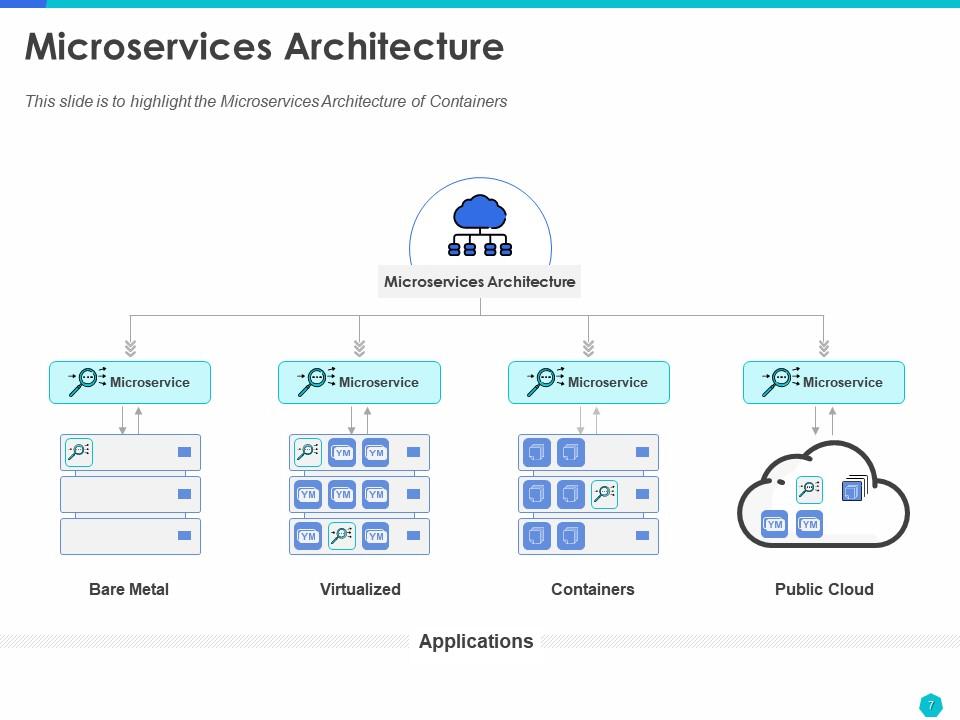
With the help of a microservices architecture style, companies can develop applications as a collection of services. You can develop and deploy these services independently. For example, the architecture style can be used to run media and payment transactions independently on websites. Our pre-designed slide includes a detailed diagram of the microservices architecture; this is an easier and effective way to really get your point across the audience.
Template 4: Microservices Architecture E-Commerce Application

The slide explains the concept of microservices with an e-commerce application use case. Let us consider the process of viewing a product on Amazon. When you search for a product, look for its reviews, or make payments, each request is broken down and sent to its corresponding microservices. Now, if you want to make changes to the payment or the review section, you can do so independently. With this slide, we have attempted to explain the architectural style better with the help of an illustration.
Template 5: Why should Organizations use Kubernetes?
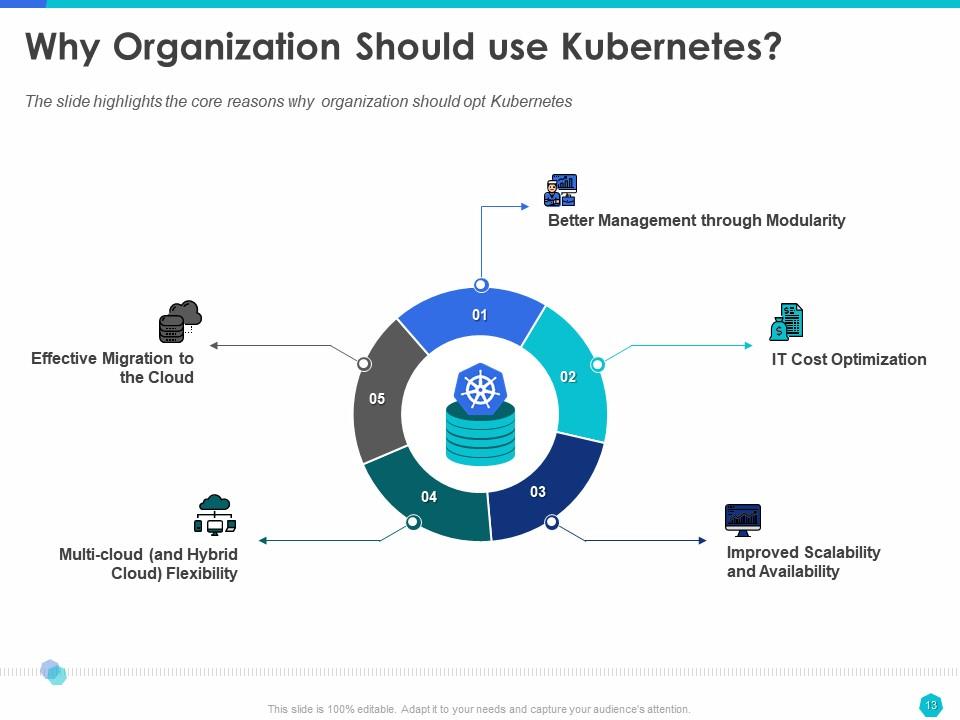
Kubernetes can make the process of developing and deploying complex applications easier. It can help improve application scalability while bringing down the associated IT costs. If you want to convince stakeholders to adopt Kubernetes or help investors understand the part of technology in business growth, this is the slide that can help you. We have used a donut chart with five sections highlighting reasons for Kubernete's adoption. The slide has a clutter-free design, with only the infographic and the headings taking space. You can elaborate on these reasons at the time of presentation.
Template 6: Roadmap to install Kubernetes
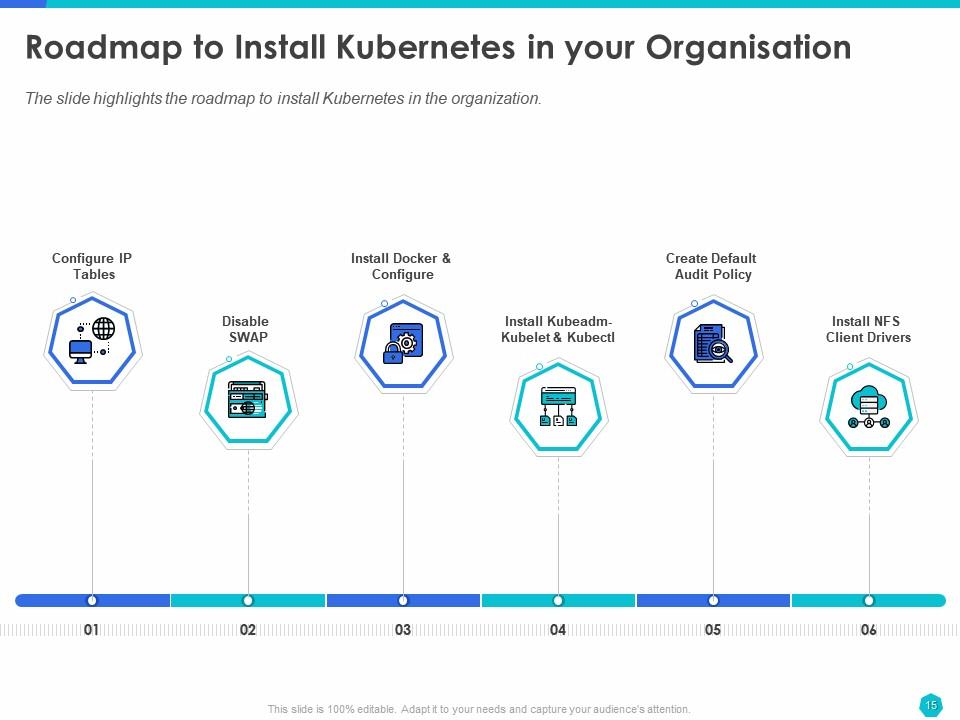
There are ways in which one can install Kubernetes, depending on usage. For example, if you want to experiment with Kubernetes, you can opt for a single-node installation. If you want to get an in-depth understanding of the topic, installing it from scratch would be the way to go. You can present the agreed-upon Kubernetes installation approach for your organization with this slide. We have used a roadmap illustration with numbers, icons, and steps to explain the process.
Template 7: Features of Kubernetes
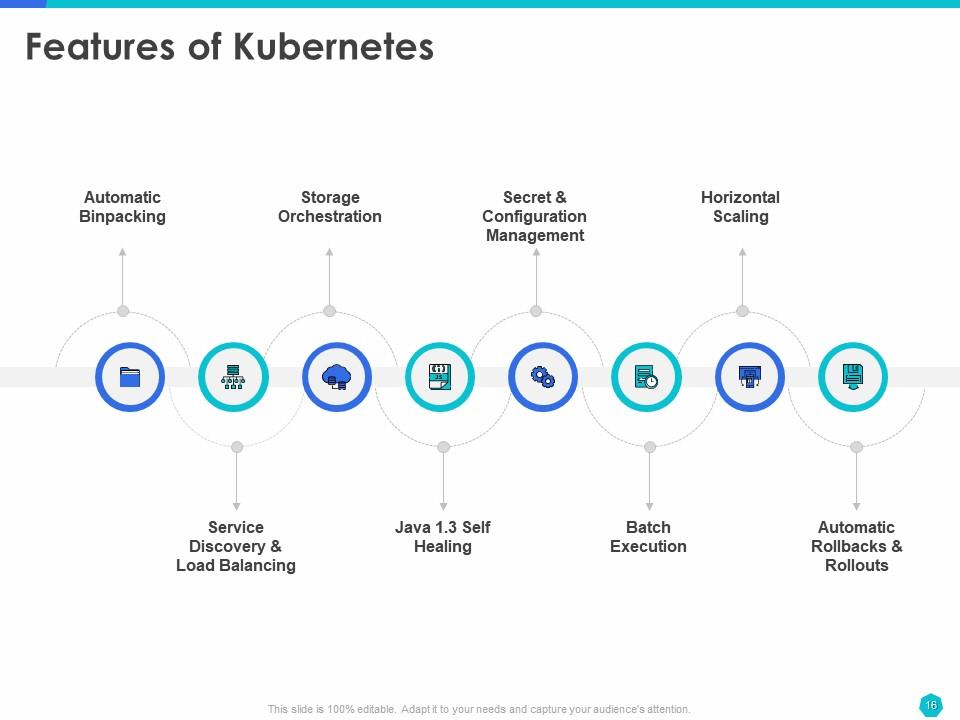
In this slide, we focus on the particulars of what Kubernetes does. Kubernetes can roll out changes, evaluate application health, and roll back changes in case of issues. It is self-healing, meaning if a node dies, it reschedules the containers, and if the containers fail, they are restarted. Kubernetes can roll out changes, monitor application health, and roll back changes in case of issues. It is self-healing, meaning if a node dies, it reschedules the containers, and if the containers fail, they are restarted.
Template 8: Kubernetes Architecture
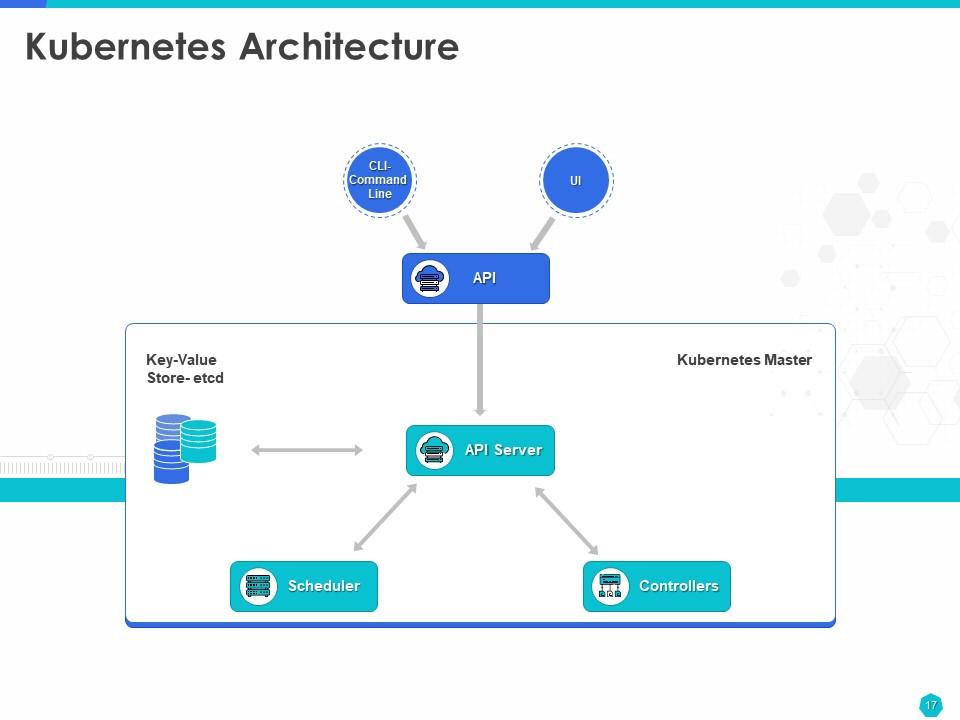
The Kubernetes architecture consists of two main parts: the master node and worker nodes. The master node consists of the API server, scheduler, controller, etc. It is responsible for cluster management. The applications run on the worker nodes. The Kubernetes architecture slide provides a graphical representation of the master node and UI. Instead of text, using this visual image during a presentation can help viewers process and retain information better.
Template 9: Advantage of Kubernetes
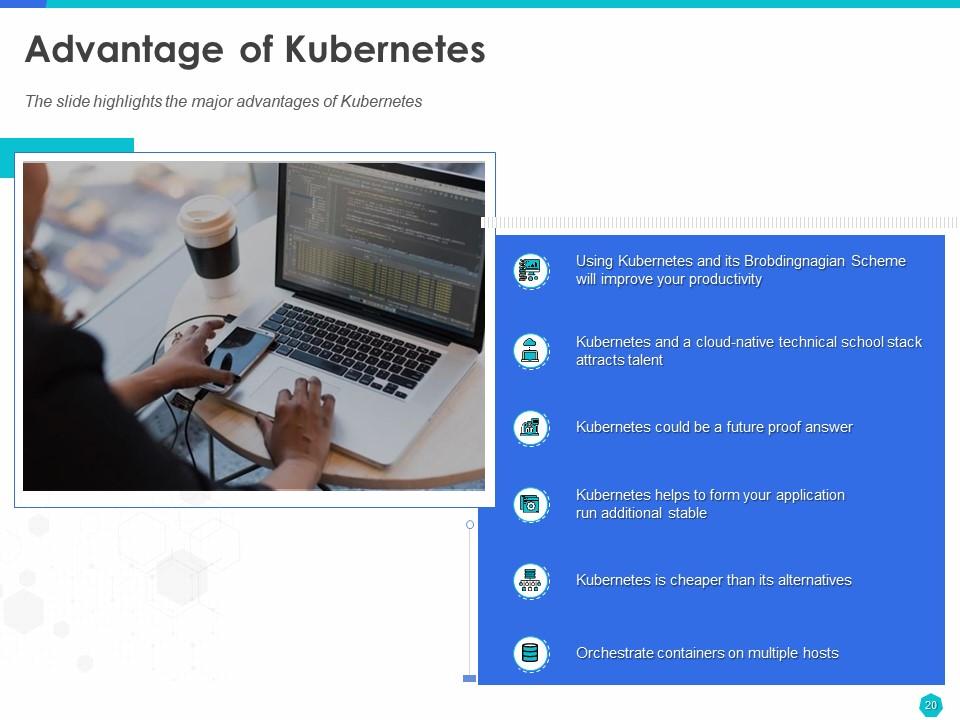
Use the ‘Advantages of Kubernetes’ slide to reiterate the importance of Kubernetes and how it can help your business. For example, how Kubernetes is an affordable solution to improve productivity. We have kept the slide structure simple, with one section dedicated to imagery and the other to the advantages. The advantages are listed with descriptive icons acting as bullet points.
Template 10: Kubernetes Components
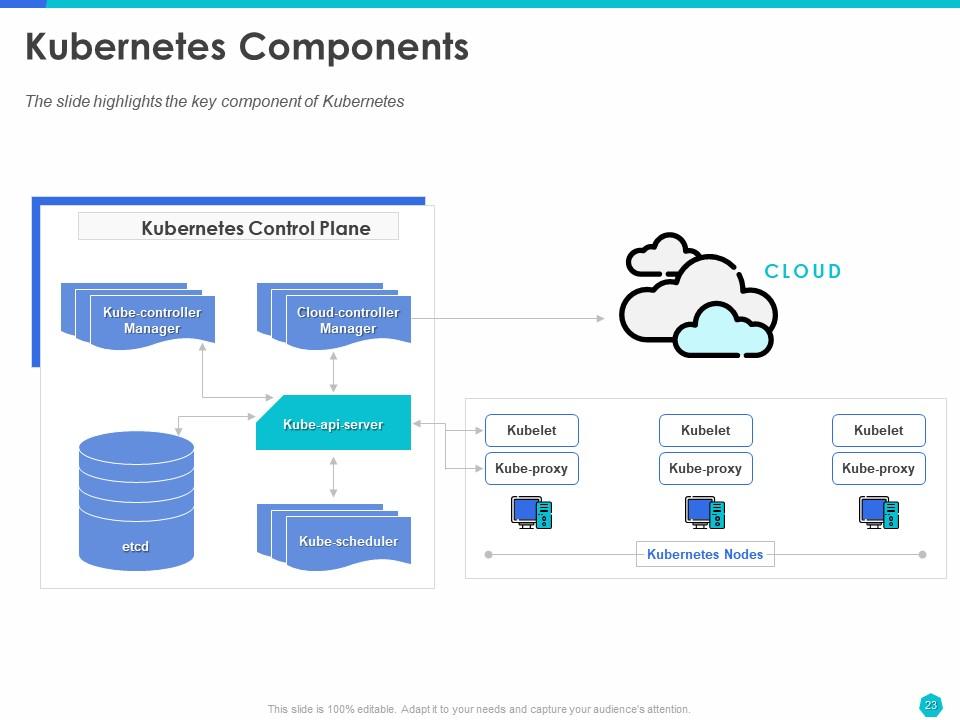
The slide provides an in-depth diagram of the Kubernetes architecture. Here, you can see the master node, the multiple worker nodes, and the interaction between them. Earlier, we saw the components in the master node. This slide introduces worker node components like Kubelet and kube-proxy. Keeping in line with the theme of the deck, we have only used the illustration for presentation purposes. The slide is editable so that you can include additional elements in the architecture specific to your application.
Template 11: What is Kubelet?
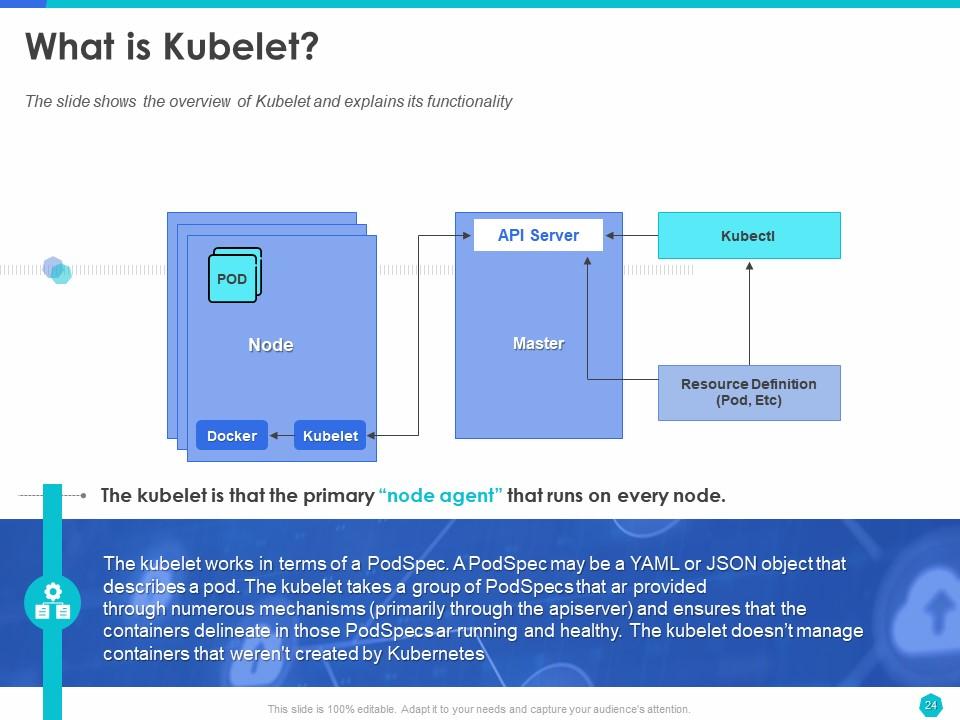
The slide provides an overview of the node component called Kubelet and explains what it does. You can explain what a Kubelet is with the help of an infographic and text description. Again, the slide is 100% editable, so adapt it to your business application.
Deploy, Scale, and Manage Applications Better with Kubernetes
Is your company looking to adapt Kubernetes? Are you responsible for upskilling employees? Do you provide professional training on Kubernetes? Our pre-made kubernetes docker container implementation PPT can help in all these scenarios. We have predominantly used illustrations and text where required to explain topics like containers, microservices, architecture, components, and benefits. The well-researched and designed deck can significantly reduce the efforts required to prepare comprehensive training material on Kubernetes. As the design elements are 100% editable, you can personalize the deck to reflect your business branding.
Do you need to explain the continuous deployment process to upper and mid-level managers? Consider using our pre-designed continuous deployment containerization with docker PPT. The deck extensively uses diagrams and lists to explain complex topics in an easy-to-understand manner.
Kubernetes docker container implementation ppt powerpoint presentation slide templates with all 48 slides:
Use our Kubernetes Docker Container Implementation Ppt Powerpoint Presentation Slide Templates to effectively help you save your valuable time. They are readymade to fit into any presentation structure.
FAQs
Containers are a lightweight form of virtualization that enables the isolation and packaging of applications and their dependencies into a single deployable unit.
Containers offer several benefits such as faster deployment, scalability, portability, and improved resource utilization, which makes them an ideal solution for modern-day application development and deployment.
No, containers are a technology that enables the packaging and deployment of microservices, which are a software architectural style that involves breaking down large applications into smaller, independently deployable services.
Kubernetes is an open-source container orchestration platform that automates the deployment, scaling, and management of containerized applications.
Kubernetes can automate container deployment, scaling, and management, facilitate container networking and storage, provide load balancing and service discovery, and enable rolling updates and rollbacks.
Kubernetes is a more feature-rich and complex container orchestration platform than Docker Swarm. Kubernetes is designed to manage large-scale container deployments, while Docker Swarm is better suited for smaller clusters.
-
The pathway to our success! We now have a professional edge that impresses clients and stakeholders alike thanks to these ppt designers.
-
Plenty of knowledge! This ppt producers provide well-researched and concrete data, providing us an advantage in our field.
-
My expectations were exceeded by this presentation template. It saved my time and effort by providing significant understanding into Kubernetes and Docker.
-
After using this template for a project presentation, I received good response from my clients. Excellent investment!
-
Crafted with meticulously! This ppt creators are actual specialists who provide us with concrete information to help us succeed.
-
Make Your Skills Future-Proof! This presentation provides us with the most recent trends and strategies in Kubernetes Docker implementation.
-
Five stars! My expectations were exceeded by templates. They provided the ideal balance of clarity and inventiveness, making a lasting impression on my audience.
-
Astonishing design and content flow! Docker PPT slides brought my thoughts to life, captivating my audience's attention from beginning to end.
-
It condenses massive volumes of data and explained effectively and efficiently.
-
Incredible clarity and structure! The difficult principles of Kubernetes and Docker are expertly explained in this PowerPoint presentation. Anyone in the IT business should read this.


